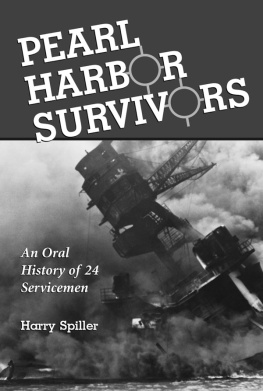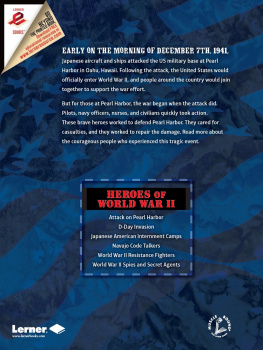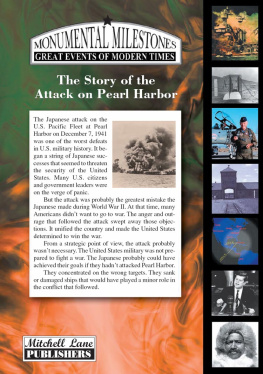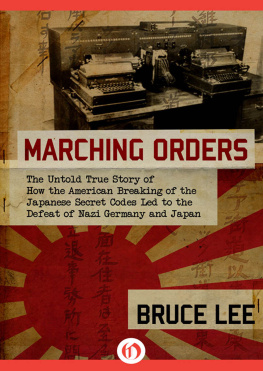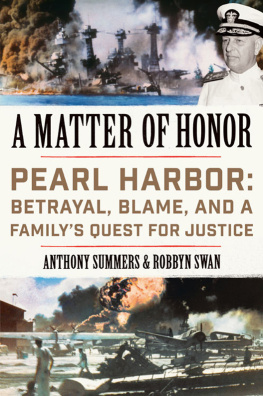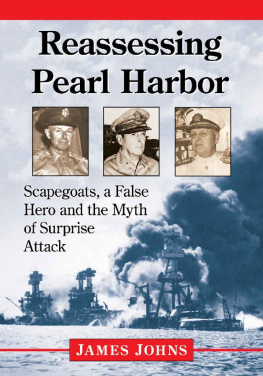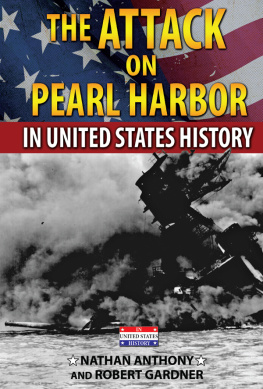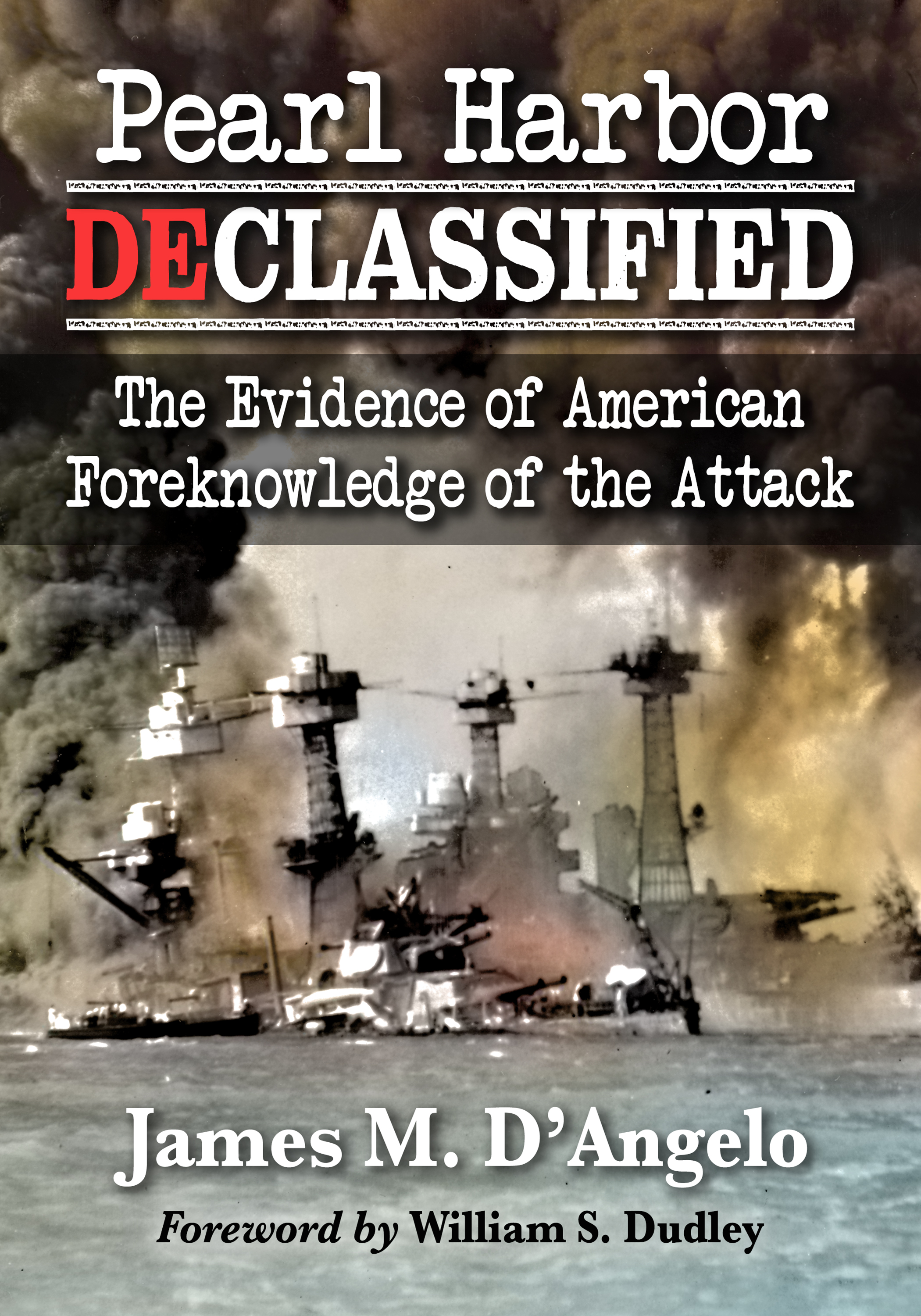Pearl Harbor Declassified
Also by James M. DAngelo
Victory at Midway: The Battle That Changed the Course of World War II (McFarland, 2018)
Pearl Harbor Declassified
The Evidence of American Foreknowledge of the Attack
James M. D'Angelo
Foreword by William S. Dudley

McFarland & Company, Inc., Publishers
Jefferson, North Carolina
Library of Congress Cataloguing-in-Publication Data
Names: DAngelo, James M., 1937 author. | Dudley, William S., writer of foreword.
Title: Pearl Harbor declassified : the evidence of American foreknowledge of the attack / James M. DAngelo ; foreword by William S. Dudley
Description: Jefferson, North Carolina : McFarland & Company, Inc., Publishers, 2021 Includes bibliographical references and index.
Identifiers: LCCN 2021030883 | ISBN 9781476684383 (paperback : acid free paper)
ISBN 9781476642376 (ebook)
Subjects: LCSH: Pearl Harbor (Hawaii), Attack on, 1941. | Roosevelt, Franklin D. (Franklin Delano), 1882-1945. | World War, 1939-1945Naval operations, American. | Military intelligenceUnited StatesHistory20th century. | StrategyHistory20th century. | World War, 1939-1945United States. | BISAC: HISTORY / Military / World War II
Classification: LCC D767.92 .D36 2021 | DDC 940.54/26693dc23
LC record available at https://lccn.loc.gov/2021030883
British Library cataloguing data are available
ISBN (print) 978-1-4766-8438-3
ISBN (ebook) 978-1-4766-4237-6
2021 James M. DAngelo. All rights reserved
No part of this book may be reproduced or transmitted in any form or by any means, electronic or mechanical, including photocopying or recording, or by any information storage and retrieval system, without permission in writing from the publisher.
Front cover image: Naval photograph of battleships USS West Virginia and USS Tennessee after the Japanese attack on Pearl Harbor, December 7, 1941 (National Archives and Records Administration)
Printed in the United States of America
McFarland & Company, Inc., Publishers
Box 611, Jefferson, North Carolina 28640
www.mcfarlandpub.com
This book is dedicated to all the men who fought and those who died in the Japanese attack on Pearl Harbor on December 7, 1941, and is devoted to expressing the truth about the U.S. governments foreknowledge of the attack.
Acknowledgments
I would like to express my appreciation and gratitude to my wife, Margaret Christine Sims, for her support and effort in editing this book. Her diligence, literary sense, and commitment greatly contributed to the quality of this work.
I also want to acknowledge the support and suggestions offered by my friend, Dr. William S. Dudley, former director of the Naval Historical Center (now Naval History and Heritage Command) throughout this process. His depth of knowledge as a historian and long experience as an author and editor have been invaluable, and I am grateful for his guidance in those areas.
Another significant contributor to whom I owe a debt of gratitude is Thomas K. Kimmel, Jr., the grandson of Admiral Husband E. Kimmel, commander of the Pacific Fleet at the time of the attack on Pearl Harbor. He is a Pearl Harbor scholar and was a 25-year career FBI agent. Tom is a graduate of the U.S. Naval Academy, served in the U.S. Navy during the Vietnam War, and attended John Marshall Law School prior to joining the FBI. He is the author of many scholarly articles about Pearl Harbor and a frequent guest speaker at many notable occasions both in the United States and throughout the world. I owe a great debt of gratitude to Captain James A. Noone, USNR (Ret.), lawyer, copy editor at the Scranton Tribune and Washington Post , and longtime member of the National Press Club, for his scrupulous editing of the entire manuscript. I want to especially thank Captain Jack Crawford, USN (Ret.), a Battle of Midway veteran (USS Yorktow n -CV-5), for his assistance in introducing us to Tom Kimmel. Jack is a longtime supporter of the International Midway Memorial Foundation and a personal friend. Jack was kind enough to review the manuscript before publication and offer helpful suggestions.
I also want to very much thank the NSA Museum of Cryptology, Colonel Bill Williams, USAF, (Ret.), Naval History and Heritage Commands John DeLuca, the National Archives Nathaniel Patch, National Archives of the United Kingdom, and the FDR Library at Hyde Park for their great assistance in helping me in my research and providing declassified documents and photographs for this book.
Table of Contents
Foreword
by W illiam S . D udley
This book by James M. DAngelo, M.D., noted author of Victory at Midway , analyzes the events preceding the dramatic opening of the Pacific War on Decem- ber 7, 1941. From a distance of 200 miles, a six-carrier Japanese task force launched a surprise attack on U.S. naval and military installations on Oahu, Hawaiian Islands. It resulted in the sinking of several battleships of the U.S. fleet at Pearl Harbor, the destruction of hundreds of land-based aircraft and sea planes at other bases, the killing of about 2,500 sailors, soldiers, and civilians, and the wounding of thousands more.
This account comprises the most recent example of revisionist history as applied to the perennial controversy over whether the Japanese attack on Pearl Harbor was as much a surprise to the government leadership in 1941 as it was to all other American citizens. It is worthwhile to consider the meaning of revisionism in history, as it is far from a one-time event. Rather, revisionism is a constant process as historians with new resources and different perspectives try to make sense out of the past. One definition of revisionism is the following: the advocacy of revision of some political theory, religious doctrine, historical or critical interpretation. Nearly all historians resort to a degree of revisionism in the effort to contribute something new to our understanding of the past.
Some view revisionism as an aberration, while others see it as a betrayal of the past as they know it. To many, however, revisionism is a way of gaining new insight on events that might otherwise be unknowable or misunderstood, like turning a kaleidoscope to see new patterns or using a stronger microscope to see more details on a slide. Since 1945 the events leading up to the attack on Pearl Harbor have been examined in more than one hundred historical books and thousands of articles. Historians have tried to understand how it was that the United States was caught off guard by Japan, a nation some 3,800 miles away from the Hawaiian Islands, then a U.S. territory, not a state. The Second World War had begun in Europe in September 1939, and by 1941 it had spread from Germany to Poland, France, Belgium, the Netherlands, Great Britain, Scandinavia, Italy, and the Soviet Union. The United States, at first, had not wished to get involved, but with world-wide financial interests, as well as political and cultural ties to western Europe, Americans were gradually drawn into a war not of their making, but one in which their vital interests were at stake.
In early 1941, Franklin Delano Roosevelt began his third term in office, but even before this he had been struggling with the question of whether, how, and when his administration would enter the war. He had spoken out adamantly to U.S. citizens about avoiding war because a predominant part of the American population opposed involvement in the late 1930s. There were still bitter memories of losses and scarcities during World War I among the public at large. On the other hand, in order to lift the nation out of the Great Depression, the administration supported legislation to strengthen the U.S. fleet, build more tanks and modern military aircraft, and increase employment.


